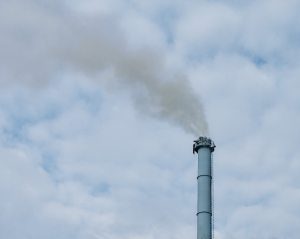Australia is sitting on a large surplus of carbon credits because it looks like it will comfortably meet its Kyoto Treaty targets. Australia started off with a relatively easy target in the first place, courtesy of some last minute horse-trading, and was allowed it to increase its emissions by 8 per cent by 2012 – from the base level of 1990 – when most other countries were required to make cuts.
In the last few years, says ANU researcher Andrew McIntosh, Australian emissions have declined, thanks to a combination of factors including reduced energy demand, thanks to the effects of La Nina and milder water, the impact of energy efficiency measures, the increased penetration of solar PV, more gas generation (particularly in Queensland), and the increased availability of hydro as dam levels recovered.
Now, according to Deutsche Bank analyst Tim Jordan, Australia is sitting on a potential surplus of 125 million tonnes from its Kyoto commitment, although it is not entirely clear how it can benefit from this.
In theory, Australia could sell these credits (known as AAUs or assigned amount units). But the market for these has fallen through the floor, thanks to massive surpluses enjoyed by Eastern European countries after their economies collapsed, and the fact that would-be buyers such as Canada, which was falling well short of its Kyoto targets, have simply walked away from the treaty. Bloomberg New Energy Finance last year estimated that Canada’s shortfall was 890 million tonnes of CO2e, or a potential bill of about $6.7 billion at prices prevailing at the time. The price then slumped sharply after Canada walked away, more than halvng the value of Australia’s surplus.
Jordan says AAUs are currently selling for between €2 and €5 a tonne – suggesting a total value of between $300 and $770 million – with the only significant buyers being Austria and Japan. The excess of AAUs in Europe, and what to do about them, has been one of the big factors weighing on the European price of carbon, which is currently wallowing below €8/tonne. Jordan says Australia could retain the credits and use them as a hedge against future emissions targets, but it is not entirely clear how this would operate as a successor to Kyoto has yet to be agreed, let alone negotiated.
“There is no legal agreement governing emissions reductions after 2012, and the Durban talks decided that a new binding global framework will only apply after 2020, so it is not clear what formal obligations Australia’s AAU balance would be measured against,” he wrote.
Blip, or no blip?
While Australia as succeeded in reducing its emissions, the world as a whole has not. In 2010, the rebound in economic growth as the world finally recovered from the GFC led to an expected spike in emissions, but what researchers found disconcerting was that it it also reversed a four decade-long trend of emissions growing more slowly than the global economy.
According to Frank Jotzo, from the Centre for Climate Economic and Policy at the ANU Crawford School, from 1972 to 2010, the global economy grew at an average of 3.5 per cent, well ahead of the average 2.2 per cent growth in emissions.
But in 2010, the global economy rebounded 5.2 per cent, but was outstripped by a 5.8 per cent surge in emissions. The ratio of energy use and carbon emissions over economic growth were both in positive territory, after a negative trend since 1970.
Research by Jotzo and Paul Burke, an energy economist at the ANU, along with McIntosh, Peter Wood and David Stern, suggests this should be a one-off, caused by an unusual combination of fiscal stimulus that was focused on energy intensive activities such as construction, and more use of carbon-intensive electricity generation, possibly because of low fossil fuel prices.
They are convinced that this is a one-off. “The 2010 emissions surge was exceptional,” they wrote in a report published in Nature Climate Change. “It is likely that global emissions growth slowed in 2011 and the fragile condition of the world economy suggests moderate emissions growth for 2012 as well.”
Still, the world needs to accelerate its efforts and achieve real cuts in emissions, rather than just slower growth. “Cutting global emissions remains an enormous challenge, because of the strong underlying growth momentum, particularly in developing countries,” they wrote. “Energy efficiency will need to be improved at a rate of knots, and zero-carbon sources deployed faster. China, in many respects, is leading the way, but much stronger policy action is needed in just about all countries.”
King Coal’s shrinking domain
Meanwhile, here’s an interesting graph showing the dramatic slump in the share of coal in US electricity generation. The graph, supplied by the US Energy Information Administration, shows coal declining from near 50 per cent two years ago to 39 per cent late last year. It is coal’s lowest share since 1978.
The decline is being blamed on a combination of mild weather (which has led to a drop in total generation) and the increasing price competitiveness of natural gas, which is now cheaper than coal, particularly for new build generation. relative to coal contributed to the drop in coal’s share of total generation. A campaign against coal-fired generation, led by the Sierra Club, and emissions controls from the EPA have also caused announced and actual coal fired plant closures.
While coal’s share of electricity generation declined to 39 per cent from 46 per cent a year earlier, the share of gas rose to 26 per cent from 22 per cent, nuclear to 22 per cent from 20 per cent, while hydro and other renewables accounted for 7 per cent and six per cent respectively.











